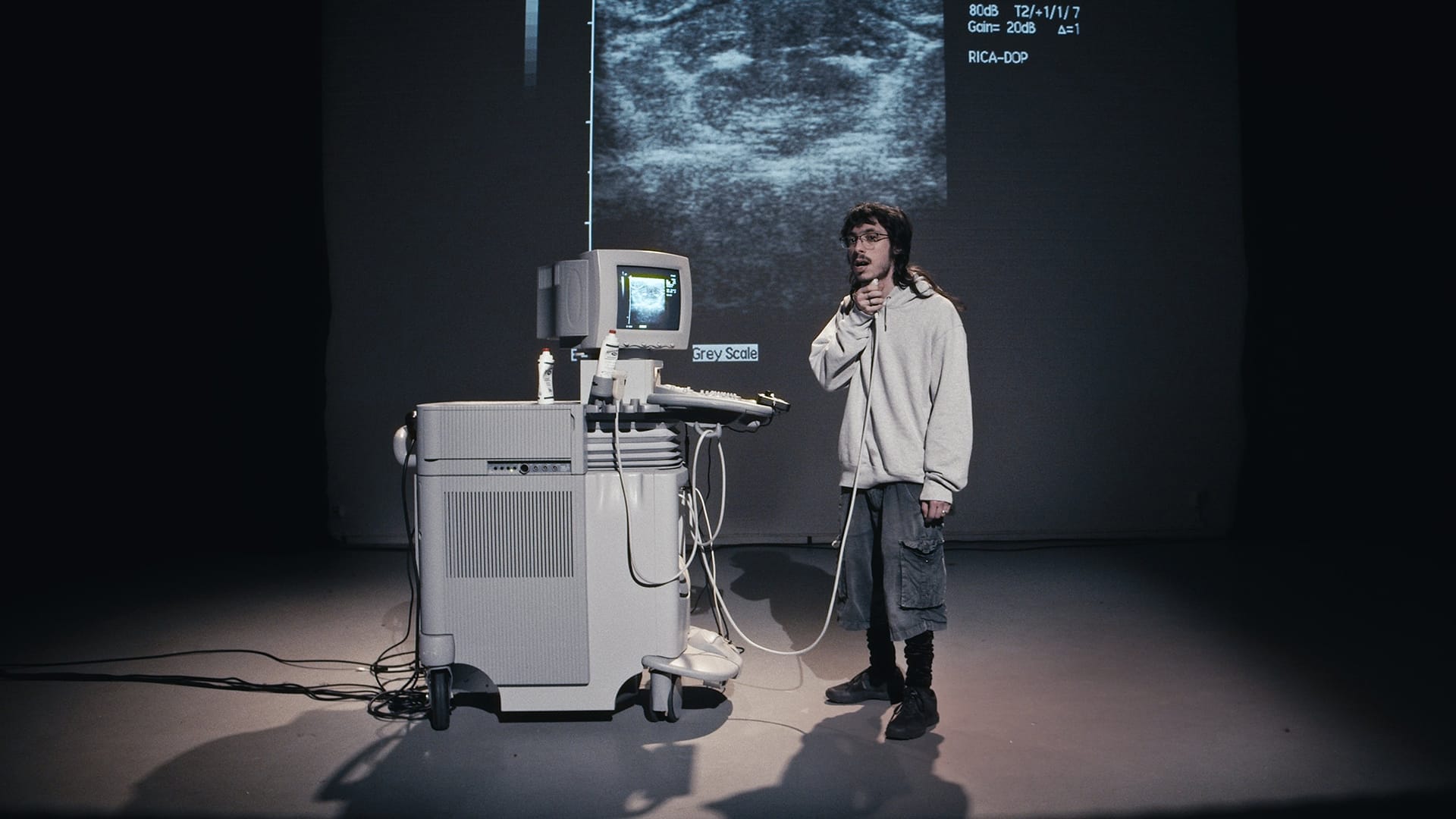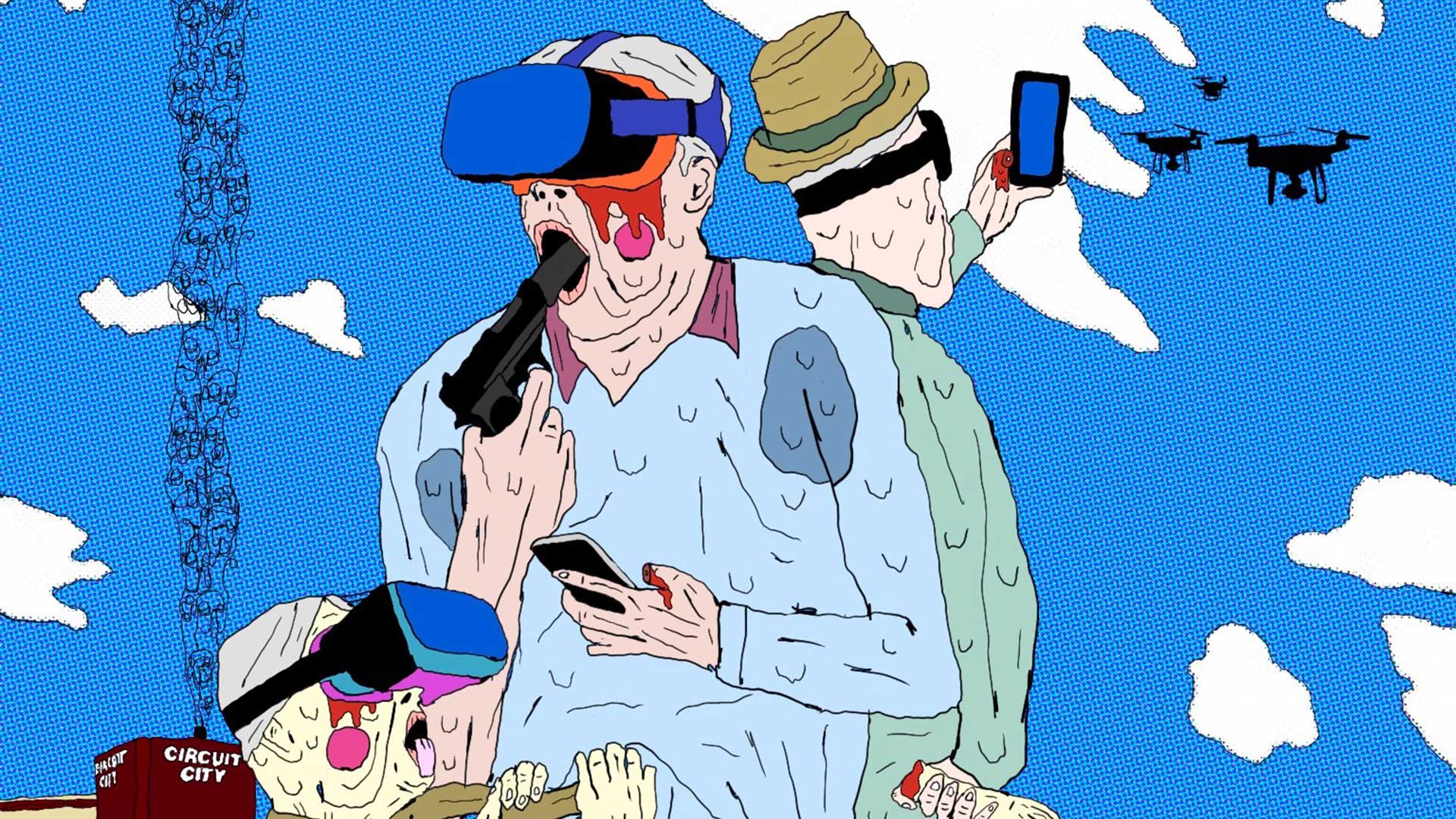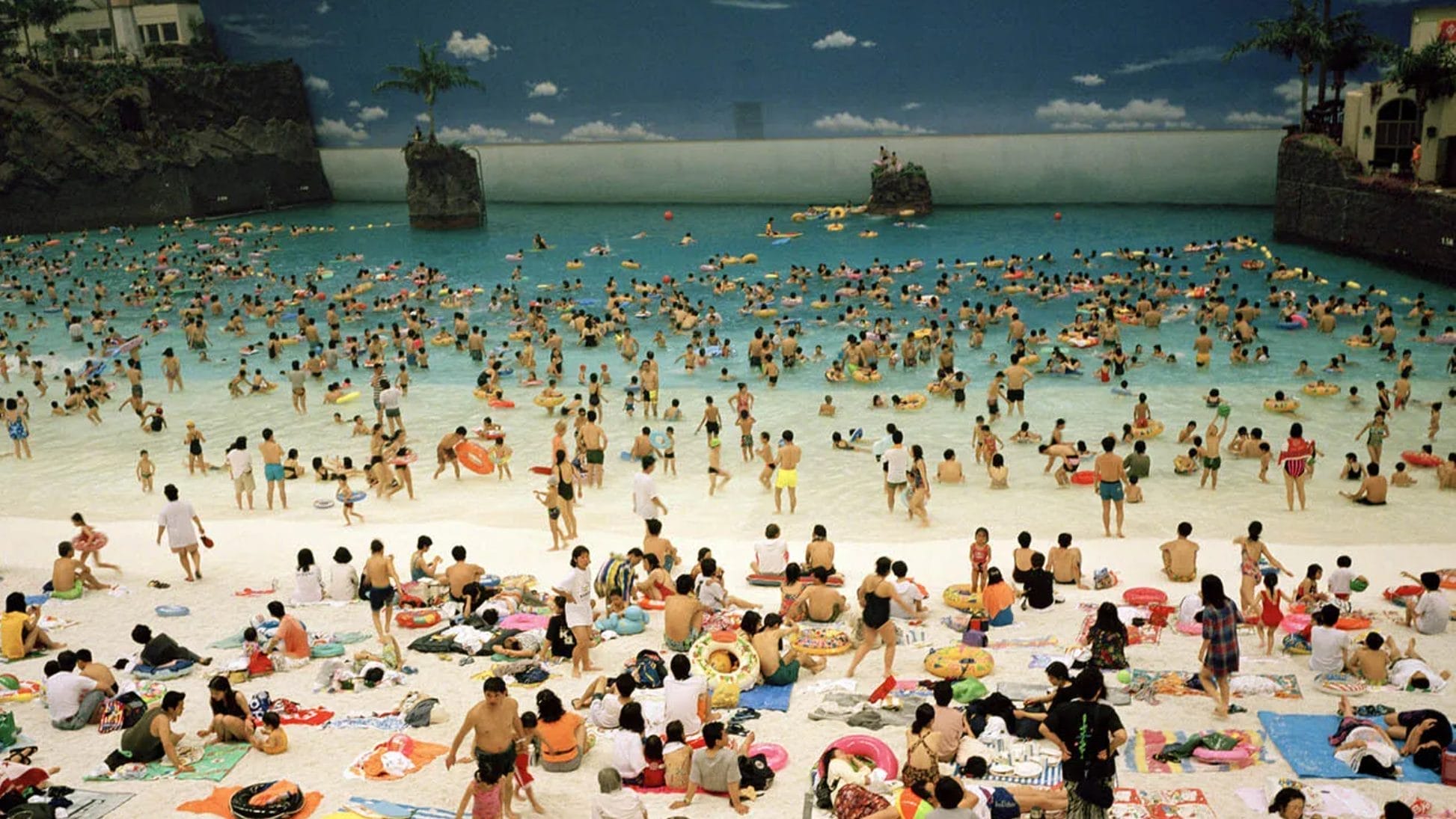
Martin Parr: The Candid Eye of Contemporary Society
Martin Parr, an icon of contemporary photography, embarked on his artistic journey by delving into the nuances of everyday life. Born in 1952 in Epsom, Surrey, Parr developed an early interest in photography, influenced by his amateur photographer uncle. This passion led him to study photography at the Manchester Polytechnic. After his studies, Parr moved to Hebden Bridge, West Yorkshire, in 1975, a crucial period for his artistic growth.
In Hebden Bridge, Parr explored black-and-white photography, focusing his lens on Methodist and Baptist chapels. These chapels, symbols of declining rural communities, were the muse for his first mature work, “The Non-Conformists.” In these works, Parr captures not just the architecture, but also the lives and traditions of people, offering an intimate and celebratory portrait of a fading culture. In 1982, Parr and his wife Susan Mitchell moved to Wallasey, marking a decisive turn in his career: the adoption of color photography. This shift was inspired by American photographers like Joel Meyerowitz and William Eggleston. The series “The Last Resort” (1983-85), depicting life in the seaside town of New Brighton, represents a vivid example of this evolution. The series, with its vibrant colors and direct portrayal of the British working class, unveiled Parr’s ability to capture reality without filters. This work garnered both admiration and controversy, becoming a turning point in the British photographic landscape. Throughout the 1980s and 1990s, Parr’s work further evolved. He continued to explore and document various aspects of modern life, always with a critical eye and bold use of color. His works in this period continued to delve into themes such as mass tourism, consumerism, and everyday life, solidifying his reputation as one of the most important contemporary documentary photographers.
Martin Parr has published numerous photographic books that have played a significant role in disseminating his work and perspective. These books, often thematic or geographic, explore various aspects of society and culture with his distinctive critical and humorous spirit. “The Last Resort,” “The Cost of Living,” and “Small World” are just a few examples of publications that have achieved great success and influenced generations of photographers. Parr’s approach to photography has always been characterized by a unique mix of social observation, satire, and a certain affinity for the absurd. This is clearly reflected in his words: “With photography, I like to create fiction out of reality.” Parr has used his camera to explore and question society, uncovering hidden truths beneath the surface of everyday life.
Parr’s work has been exhibited worldwide and is part of major collections such as the Tate Modern in London and the Museum of Modern Art in New York. His contribution to documentary photography has made him a prominent figure in the contemporary artistic landscape, influencing not only current generations of photographers but also future ones.
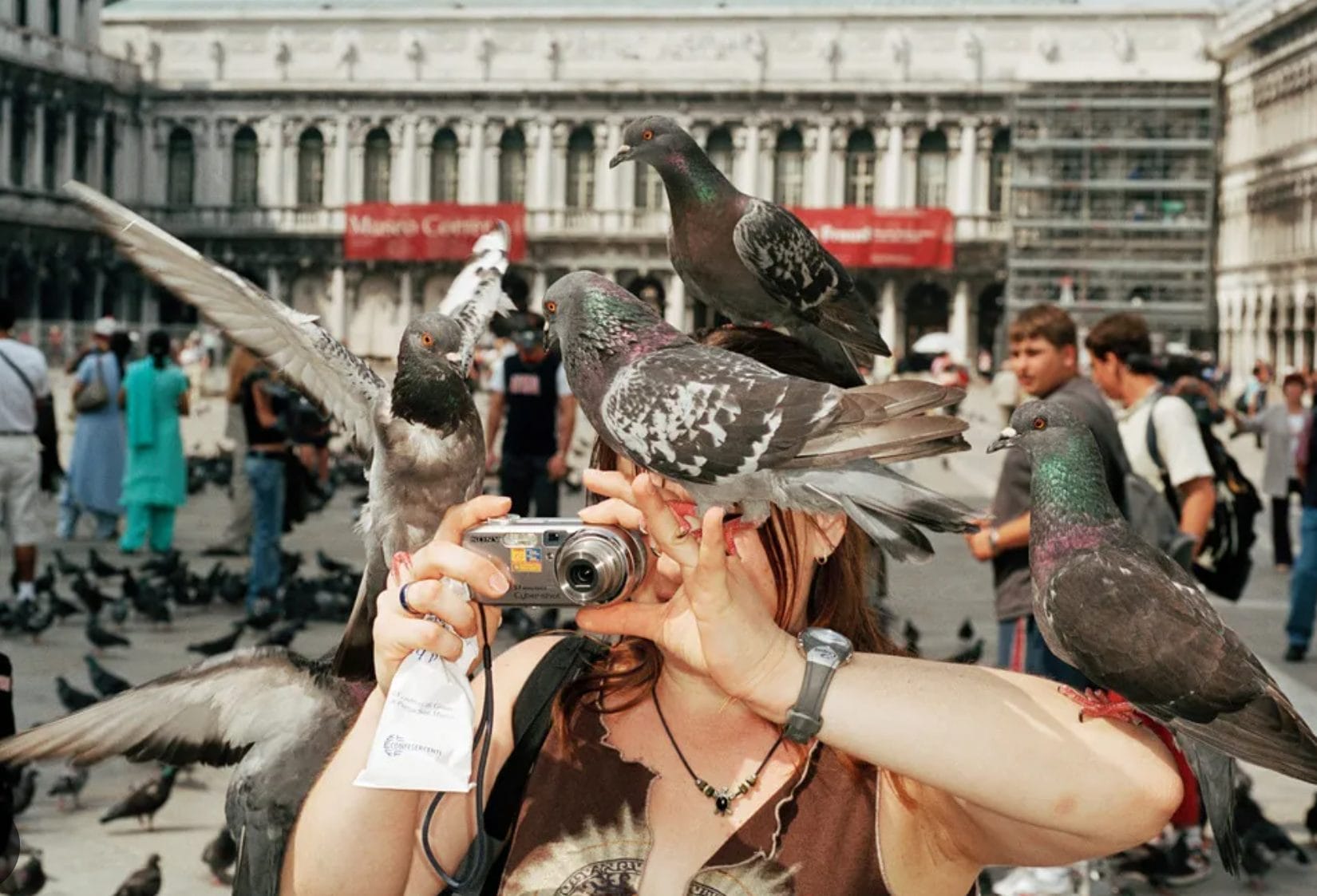
Parr and Social Critique Through Photography
At the heart of Martin Parr’s art lies an unmistakable thread: a vivid and penetrating social critique, expressed through the lens of his camera. His images, rich with saturated colors and subtle irony, are open windows onto a contemporary world both familiar and bizarre. Parr doesn’t just capture images; he creates narratives that challenge our way of viewing society.
In “The Cost of Living” (1987), Parr offers a sharp portrait of the English middle class during the Thatcher years. His images are a visual satire of the aspirations and values of a rising class, capturing scenes of everyday life from parties to shopping in malls. His gaze, however, is never judgmental, but rather an invitation to reflect on the nature of desire and success in modern society. The series “Small World” (1995) is another milestone in Parr’s artistic journey. Here, Parr delves into the world of mass tourism, a global phenomenon that transforms places and cultures into consumable products. His photographs reveal the contrast between the exotic mythology of tourist destinations and the often mundane and commercialized reality they offer. Parr captures the irony of tourists seeking authentic experiences in a context fundamentally at odds with such a quest.
Another turn in Parr’s work is found in the project “Common Sense” (1995-1999), where he explores consumerism in a boldly graphic way. By photographing everyday consumer objects in tight, color-saturated close-ups, Parr invites reflection on the absurdity and excess of consumer culture. These images, sometimes almost claustrophobic in their intensity, lead the viewer to question the nature and meaning of the objects that surround us. Parr has always had a unique approach to photography, one that could be described as incisively voyeuristic. He gets close to his subjects, capturing moments of everyday life with disarming frankness. This style has led to discussions about the role of photography in representing reality and the ethical questions connected to its practice. Parr himself has addressed these issues, advocating the importance of exaggeration in photography as a means to unveil deeper truths.
Throughout his career, Martin Parr has explored various facets of society, from class life to leisure culture, from mass tourism to politics. His work is an invitation to look beyond appearances, to grasp the contradictions and complexities of the modern world. His images, often laden with subtle humor, are powerful social commentaries that continue to stimulate debate and reflection.
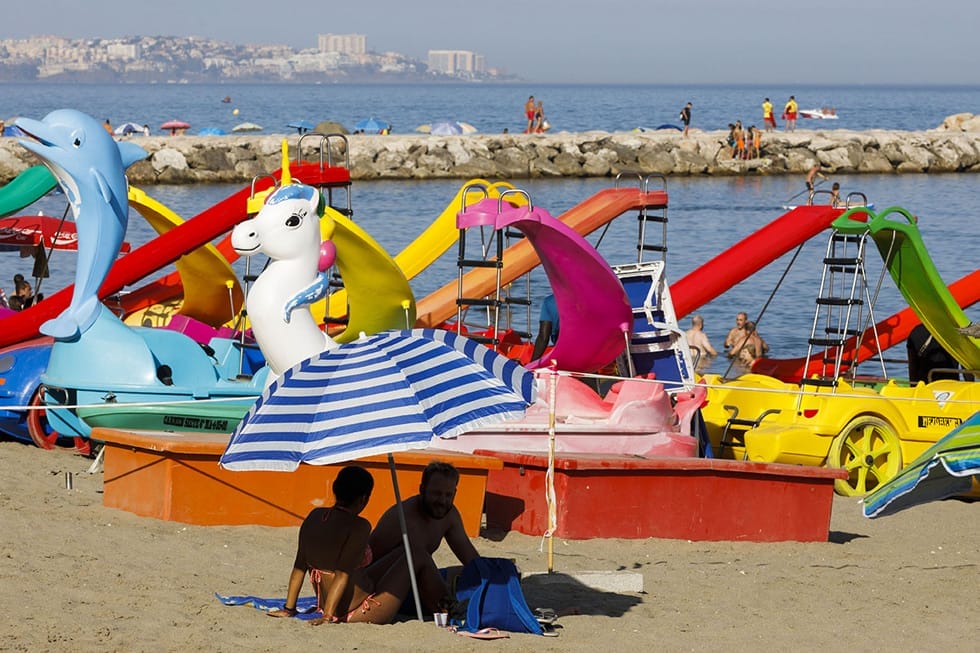
The Legacy and Impact of Martin Parr
Since joining the prestigious Magnum Photos collective in 1994, Parr has extended his reach well beyond British borders, gaining international recognition and influencing generations of photographers.
His exhibitions have crossed the thresholds of galleries and museums around the world, from Tate Modern in London to the Museum of Modern Art in New York. These venues have hosted his critical and humorous visions of society, offering viewers a unique perspective on the world around us. Beyond photography, Parr has distinguished himself as an educator and mentor. His workshops and lectures, held worldwide, have shared valuable insights and experiences in the field of documentary and street photography. Parr teaches not just photographic techniques, but also a way of seeing and interpreting the world, fostering critical reflection and greater social awareness.
His editorial and curatorial work has significantly contributed to the discourse on photography. As co-author of “The Photobook: A History,” Parr explored the history and importance of the photographic book, a medium he believes is still undervalued in the context of cultural history. This work reflects his commitment to promoting a deeper understanding of photography and its role in contemporary culture. Parr’s approach to photography has been characterized by a mix of sharp observation, satire, and an affinity for the absurd. He has transformed the everyday into something extraordinary, often through the use of vibrant colors and detailed compositions. His distinctive style and ability to capture the essence of our daily lives have created an art that is both accessible and profoundly meaningful.
In 2024, Martin Parr continues to be an influential figure in the world of photography. His ongoing projects keep alive his exploration of social themes, evolving in response to a changing world. His ability to capture emerging trends and facets of contemporary life ensures that his work remains relevant and thought-provoking.
Through his critical and often satirical lens, Martin Parr has offered a mirror to society, inviting us to reflect on our world with a new perspective. His works continue to inspire and influence not only photographers but anyone who appreciates the art of visual storytelling.
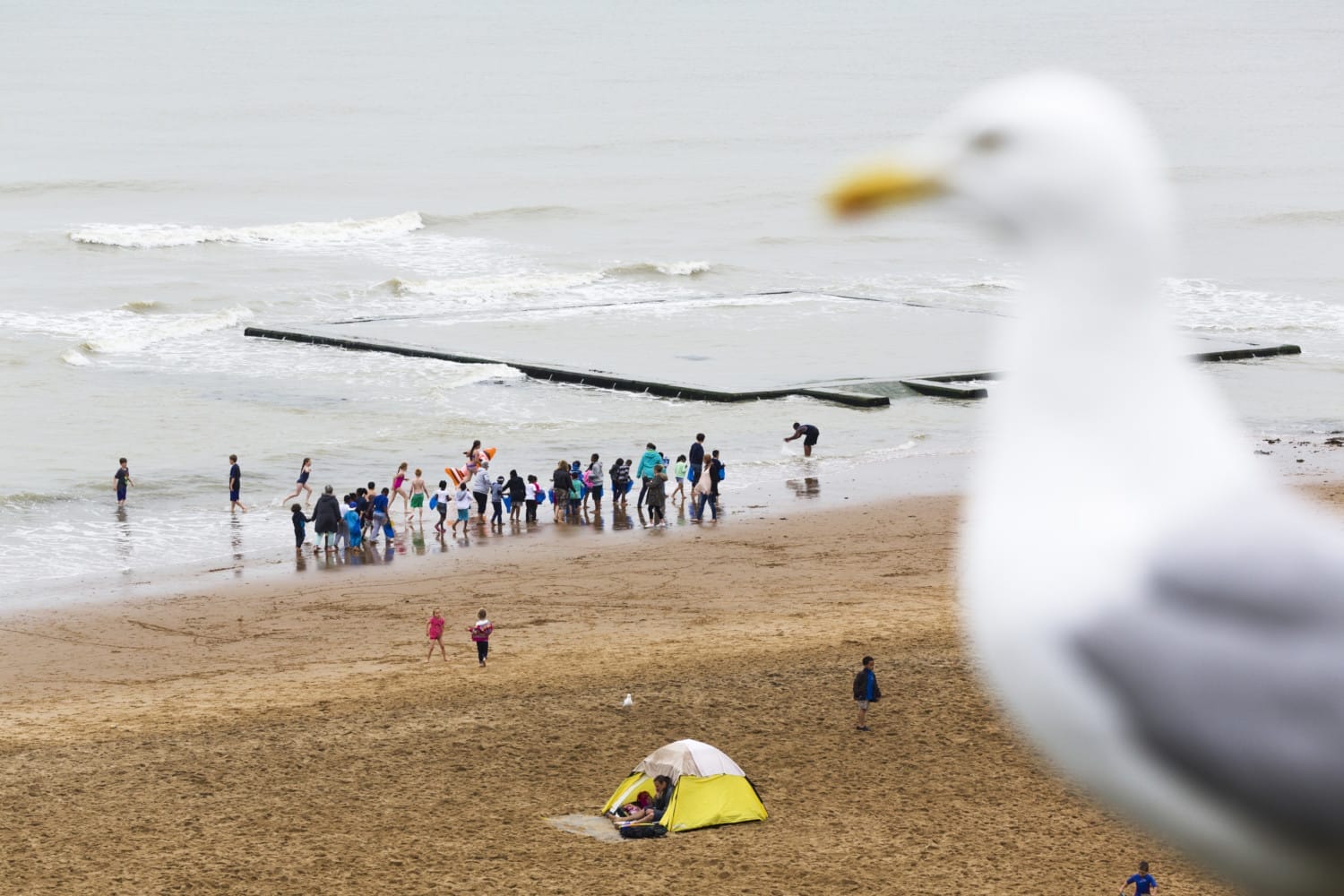
fakewhale
Founded in 2021, Fakewhale advocates the digital art market's evolution. Viewing NFT technology as a container for art, and leveraging the expansive scope of digital culture, Fakewhale strives to shape a new ecosystem in which art and technology become the starting point, rather than the final destination.
You may also like
Beyond the Conventional: Doubts and Shadows in Amos Peled works
Fakewhale engages in conversation with Amos Peled, a multimedia artist who uses doubt as a methodolo
Beyond The Ashes: Inside Where There’s Smoke by Lance Weiler
Featuring haunting remnants of mysterious blazes, cutting-edge technology, and a culmination of Lanc
diewiththemostlikes: A Digital Confrontation with Our Own Existence
From Poetic Roots to Digital Expression Mark Wilson, better known as diewiththemostlikes , is an In

